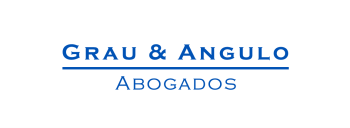On 14 March 2018 the Barcelona Commercial Court Number 4 dismissed a patent infringement action brought by Novartis against the first generics in Spain of its valsartan and amlodipine medicinal product for the treatment of hypertension (Exforge). The court upheld the defendants' counterclaim for invalidity of the asserted patent.
Novartis holds EU Patent 2322174 (EP'174) – entitled Combined Use of Valsartan and Calcium Channel Blockers for Therapeutic Purposes – which claims a fixed combination composition comprising valsartan and amlodipine for treating hypertension.
In October and November 2016 Novartis:
- sued several companies for the alleged infringement of EP'174; and
- sought preliminary injunctions to prevent the imminent launch of valsartan and amlodipine generics.
Within the main proceedings on the merits, the defendants counterclaimed for invalidity of EP'174 due to added subject matter and lack of inventive step. The lack of inventive step allegation was based on an article by Corea, published in 1996 as the closet prior art (among other possible starting points), which had dislosed the co-administration of valsartan and amlodipine. This paper described a comparative study of valsartan and amlodipine, where the blood pressure of those patients who did not respond to valsartan after eight weeks was controlled after four weeks of receiving valsartan and amlodipine.
The defendants alleged that the difference between the valsartan and amlodipine combination in Corea's article and the combination claimed in EP'174 is that the former described the co-administration of valsartan and amlodipine, whereas EP'174 claims a fixed combination of the two drugs. They argued that the technical effect of this difference would be making the treatment easier and more convenient for patients, which in turn would improve compliance. Therefore, the objective problem solved by the alleged invention would be to provide valsartan and amlodipine in a more convenient form in order to improve compliance.
Novartis opposed the lack of inventive step allegation, arguing that Corea, as well as the other starting points posed by the defendants, were not a suitable closest prior art. Instead, Novartis stated that a skilled person at the priority date (1998) would start from documents that disclosed the fixed combination of valsartan and hydrochlorothiazide, such as patent application WO 97/49394.
The trial took place on 27 and 28 November 2017. A week later the European Patent Office (EPO) Opposition Division maintained the EP'174 patent as granted, while the judgment was still pending in Spain.
Despite the EPO Opposition Division's decision, the Barcelona Commercial Court Number 4 upheld the defendants' counterclaim and revoked the patent. The decision, which was deliberated by three Barcelona patent judges, can be summarised as follows:
- The judgment posited that it is for the party arguing invalidity to select the closest prior art and not for the patentee.
- The decision reviewed the common general knowledge at the priority date (1998) and applied the so-called 'problem-solution' approach along the lines proposed by the defendants. In doing so, it concluded that providing a fixed combination was an obvious solution to the problem of administering valsartan and amlodipine in a more convenient form in order to improve patient compliance.
- The court stated that the alleged invention was obvious starting from Corea and that the patent claims thus lacked inventive step.
- The judgment did not elaborate on the other grounds for patent invalidity raised by the defendants (ie, inventive step starting from other prior art documents and added subject matter).
Novartis has appealed this decision before the Barcelona Court of Appeal. Similar court proceedings are underway in other European countries, as well as appeal proceedings at the EPO.
For further information on this topic please contact Núria Ribera at Grau & Angulo by telephone (+34 93 202 34 56) or email ([email protected]). The Grau & Angulo website can be accessed at www.ga-ip.com.
This article was first published by the International Law Office, a premium online legal update service for major companies and law firms worldwide. Register for a free subscription.



